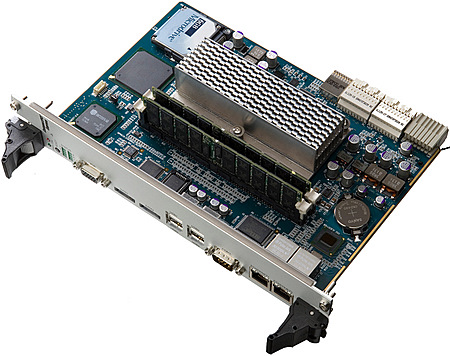Forex Trading Online is your free online Forex guide.
Here, you can learn the terms "Forex" and "Forex market", how you can trade in Forex market, fundamental analysis about Forex market, Forex trading system, advances of Forex and a Forex glossary that you can find almost all the terms about Forex.
The Basics of Forex
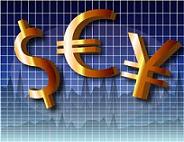 Foreign exchange market is also known as Forex or FX market. To date, it is the world's biggest "economic bazaar". FX produces an average of over $1 trillion daily earnings. That is 30 times more than combining all the volumes of America's equity markets. This currency market is where currencies are bought and sold.
Foreign exchange market is also known as Forex or FX market. To date, it is the world's biggest "economic bazaar". FX produces an average of over $1 trillion daily earnings. That is 30 times more than combining all the volumes of America's equity markets. This currency market is where currencies are bought and sold.
Introduction to Forex Trading
 There are many markets: markets for stocks, futures, options and currencies. These are probably the most accessible markets for everyday traders like you and I. People easily understand the basics of trading shares, so I will occasionally use examples from that market.
There are many markets: markets for stocks, futures, options and currencies. These are probably the most accessible markets for everyday traders like you and I. People easily understand the basics of trading shares, so I will occasionally use examples from that market.
Introduction to Fundamental Analysis: Forex
 Forex traders almost always rely on analysis to make plan their trading strategies. There are two basic types of Forex analysis - technical and fundamental. This article will look at fundamental analysis and how it used in Forex trading.
Forex traders almost always rely on analysis to make plan their trading strategies. There are two basic types of Forex analysis - technical and fundamental. This article will look at fundamental analysis and how it used in Forex trading.
Discover an Effective Forex Trading System
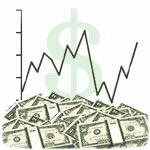 The Forex market, with average daily trading of the currencies going over US$ 1.6 trillion, is the largest financial market in the world. And it's the most liquid market there is, to trade in. Forex market or Foreign Exchange market is the trading activity that refers to the synchronized buying of one currency, which is called the base currency while selling off a second currency, called the counter or quote currency. As you've probably gathered, these currencies are traded in pairs. Some of the most popular pairs are US Dollar/Japanese Yen (USD/JPY) and the Euro/US Dollar (EUR/USD. This is done with the clear intent to profit from the appreciation of the e.g. USD Dollar. These three currencies together with the British Pound, Canadian Dollar, Australian Dollar and the Swiss Franc are the most popular currencies traded, accounting for nearly 70% of the trading done in the United States marketplace
The Forex market, with average daily trading of the currencies going over US$ 1.6 trillion, is the largest financial market in the world. And it's the most liquid market there is, to trade in. Forex market or Foreign Exchange market is the trading activity that refers to the synchronized buying of one currency, which is called the base currency while selling off a second currency, called the counter or quote currency. As you've probably gathered, these currencies are traded in pairs. Some of the most popular pairs are US Dollar/Japanese Yen (USD/JPY) and the Euro/US Dollar (EUR/USD. This is done with the clear intent to profit from the appreciation of the e.g. USD Dollar. These three currencies together with the British Pound, Canadian Dollar, Australian Dollar and the Swiss Franc are the most popular currencies traded, accounting for nearly 70% of the trading done in the United States marketplace
Online Forex Trading Advice
 Forex has changed dramatically in the last 10 years due to technological advancements. With real-time streaming technology and faster computer systems, almost anything is available at the click of a button. I would like to go over a few of the benefits of online Forex trading. Consult with your broker to determine if trading online is right for you.
Forex has changed dramatically in the last 10 years due to technological advancements. With real-time streaming technology and faster computer systems, almost anything is available at the click of a button. I would like to go over a few of the benefits of online Forex trading. Consult with your broker to determine if trading online is right for you.
Forex Trading Software
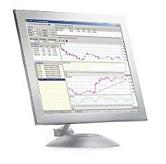 If you are looking to get started trading the Forex, you will find that there are numerous software programs available (both web based and desktop based) for you to use in your trading. In fact, most brokers offer clients a software package for free or as part of their trading account. Usually the software that comes with your trading account is a very basic "bare bones" model. Sometimes, more features are available for a price. The software packages your broker provides can be an important consideration in choosing a broker. You may want to download and try some different packages using a demo account. This will give you a better idea of which software package you find most suitable to your unique style of trading.
If you are looking to get started trading the Forex, you will find that there are numerous software programs available (both web based and desktop based) for you to use in your trading. In fact, most brokers offer clients a software package for free or as part of their trading account. Usually the software that comes with your trading account is a very basic "bare bones" model. Sometimes, more features are available for a price. The software packages your broker provides can be an important consideration in choosing a broker. You may want to download and try some different packages using a demo account. This will give you a better idea of which software package you find most suitable to your unique style of trading.
Forex Trading Best Practises
Forex, the term for the FOReign EXchange market, is an international exchange market where currencies from many different countries are bought and sold. Both long-term hedge investors and short-term investors that seek quick profits use Forex. Trade reaches between 1 and 1.5 trillion US dollars per day. Needless to say, Forex is a very lucrative market. Many wonder how to gain the most profits by trading with Forex. There are a few simple trade practices that can help any trader, either an amateur or a professional make significant profit from Forex.
Forex Benefits Over Futures
 The origins of the modern futures market lies in the agriculture markets of the 19th century. Farmers started selling contracts to deliver agricultural products at a later date. This was done to anticipate market needs and stabilize supply and demand during off seasons.
The origins of the modern futures market lies in the agriculture markets of the 19th century. Farmers started selling contracts to deliver agricultural products at a later date. This was done to anticipate market needs and stabilize supply and demand during off seasons.
 The presentation of the first Cyrillic top-level domain name,.РФ is said to be the main event at the Russian Internet Week .
The presentation of the first Cyrillic top-level domain name,.РФ is said to be the main event at the Russian Internet Week . After trading near parity with the U.S. dollar this month, the Canadian dollar was pushed away from equality with the greenback as the national central bank published a report on the subject, as well as stocks and commodities declined today.
After trading near parity with the U.S. dollar this month, the Canadian dollar was pushed away from equality with the greenback as the national central bank published a report on the subject, as well as stocks and commodities declined today. The Swedish krona fell today after the national central bank maintained interest rates at a record low, indicating that the Nordic economic will require further stimulus to recover from the current recession.
The Swedish krona fell today after the national central bank maintained interest rates at a record low, indicating that the Nordic economic will require further stimulus to recover from the current recession. The South African rand had the worst performance among 16 main traded currencies today after a news agency affirmed that the national central bank intended to intervene massively stopping the rand to fluctuate, causing a negative impact in the rand rates today.
The South African rand had the worst performance among 16 main traded currencies today after a news agency affirmed that the national central bank intended to intervene massively stopping the rand to fluctuate, causing a negative impact in the rand rates today. Foreign exchange market is also known as Forex or FX market. To date, it is the world's biggest "economic bazaar". FX produces an average of over $1 trillion daily earnings. That is 30 times more than combining all the volumes of America's equity markets. This currency market is where currencies are bought and sold.
Foreign exchange market is also known as Forex or FX market. To date, it is the world's biggest "economic bazaar". FX produces an average of over $1 trillion daily earnings. That is 30 times more than combining all the volumes of America's equity markets. This currency market is where currencies are bought and sold.  There are many markets: markets for stocks, futures, options and currencies. These are probably the most accessible markets for everyday traders like you and I. People easily understand the basics of trading shares, so I will occasionally use examples from that market.
There are many markets: markets for stocks, futures, options and currencies. These are probably the most accessible markets for everyday traders like you and I. People easily understand the basics of trading shares, so I will occasionally use examples from that market.  Forex traders almost always rely on analysis to make plan their trading strategies. There are two basic types of Forex analysis - technical and fundamental. This article will look at fundamental analysis and how it used in Forex trading.
Forex traders almost always rely on analysis to make plan their trading strategies. There are two basic types of Forex analysis - technical and fundamental. This article will look at fundamental analysis and how it used in Forex trading.  The Forex market, with average daily trading of the currencies going over US$ 1.6 trillion, is the largest financial market in the world. And it's the most liquid market there is, to trade in. Forex market or Foreign Exchange market is the trading activity that refers to the synchronized buying of one currency, which is called the base currency while selling off a second currency, called the counter or quote currency. As you've probably gathered, these currencies are traded in pairs. Some of the most popular pairs are US Dollar/Japanese Yen (USD/JPY) and the Euro/US Dollar (EUR/USD. This is done with the clear intent to profit from the appreciation of the e.g. USD Dollar. These three currencies together with the British Pound, Canadian Dollar, Australian Dollar and the Swiss Franc are the most popular currencies traded, accounting for nearly 70% of the trading done in the United States marketplace
The Forex market, with average daily trading of the currencies going over US$ 1.6 trillion, is the largest financial market in the world. And it's the most liquid market there is, to trade in. Forex market or Foreign Exchange market is the trading activity that refers to the synchronized buying of one currency, which is called the base currency while selling off a second currency, called the counter or quote currency. As you've probably gathered, these currencies are traded in pairs. Some of the most popular pairs are US Dollar/Japanese Yen (USD/JPY) and the Euro/US Dollar (EUR/USD. This is done with the clear intent to profit from the appreciation of the e.g. USD Dollar. These three currencies together with the British Pound, Canadian Dollar, Australian Dollar and the Swiss Franc are the most popular currencies traded, accounting for nearly 70% of the trading done in the United States marketplace  Forex has changed dramatically in the last 10 years due to technological advancements. With real-time streaming technology and faster computer systems, almost anything is available at the click of a button. I would like to go over a few of the benefits of online Forex trading. Consult with your broker to determine if trading online is right for you.
Forex has changed dramatically in the last 10 years due to technological advancements. With real-time streaming technology and faster computer systems, almost anything is available at the click of a button. I would like to go over a few of the benefits of online Forex trading. Consult with your broker to determine if trading online is right for you.  If you are looking to get started trading the Forex, you will find that there are numerous software programs available (both web based and desktop based) for you to use in your trading. In fact, most brokers offer clients a software package for free or as part of their trading account. Usually the software that comes with your trading account is a very basic "bare bones" model. Sometimes, more features are available for a price. The software packages your broker provides can be an important consideration in choosing a broker. You may want to download and try some different packages using a demo account. This will give you a better idea of which software package you find most suitable to your unique style of trading.
If you are looking to get started trading the Forex, you will find that there are numerous software programs available (both web based and desktop based) for you to use in your trading. In fact, most brokers offer clients a software package for free or as part of their trading account. Usually the software that comes with your trading account is a very basic "bare bones" model. Sometimes, more features are available for a price. The software packages your broker provides can be an important consideration in choosing a broker. You may want to download and try some different packages using a demo account. This will give you a better idea of which software package you find most suitable to your unique style of trading.  The origins of the modern futures market lies in the agriculture markets of the 19th century. Farmers started selling contracts to deliver agricultural products at a later date. This was done to anticipate market needs and stabilize supply and demand during off seasons.
The origins of the modern futures market lies in the agriculture markets of the 19th century. Farmers started selling contracts to deliver agricultural products at a later date. This was done to anticipate market needs and stabilize supply and demand during off seasons.  The euro continued to remain near a 14-month high versus the dollar today, as concerns regarding the current strength of the European common currency start to emerge among ECB officials, since a strong euro could jeopardize economic recovery in its member countries.
The euro continued to remain near a 14-month high versus the dollar today, as concerns regarding the current strength of the European common currency start to emerge among ECB officials, since a strong euro could jeopardize economic recovery in its member countries. The Brazilian real has been the best performing currency among the 16 more traded in foreign-exchange markets this year, and after a central bank measure to tax foreign investment on stocks and bonds to curb the currency’s rally, the real fell today.
The Brazilian real has been the best performing currency among the 16 more traded in foreign-exchange markets this year, and after a central bank measure to tax foreign investment on stocks and bonds to curb the currency’s rally, the real fell today. The Norwegian krone witnessed an intense rally this week sparked by a rise in crude oil rates and risk appetite among traders, but today, a downturn in stock markets throughout the world set the Nordic currency down for the first time this week.
The Norwegian krone witnessed an intense rally this week sparked by a rise in crude oil rates and risk appetite among traders, but today, a downturn in stock markets throughout the world set the Nordic currency down for the first time this week. The U.S. currency finally posted gains versus most of 16 main traded currencies as some investors suggested that the recovery in the North American economy is not compatible with such losses in currency markets, providing support for the greenback to pare gains of most emergent market currencies which were climbing these week.
The U.S. currency finally posted gains versus most of 16 main traded currencies as some investors suggested that the recovery in the North American economy is not compatible with such losses in currency markets, providing support for the greenback to pare gains of most emergent market currencies which were climbing these week. The Australian dollar, together with its New Zealand counterpart are among the best performing currencies in foreign-exchange markets in 2009 after evidences pointed the resilience of South Pacific countries to recover from the crisis, attracting worldwide investors to the region.
The Australian dollar, together with its New Zealand counterpart are among the best performing currencies in foreign-exchange markets in 2009 after evidences pointed the resilience of South Pacific countries to recover from the crisis, attracting worldwide investors to the region.
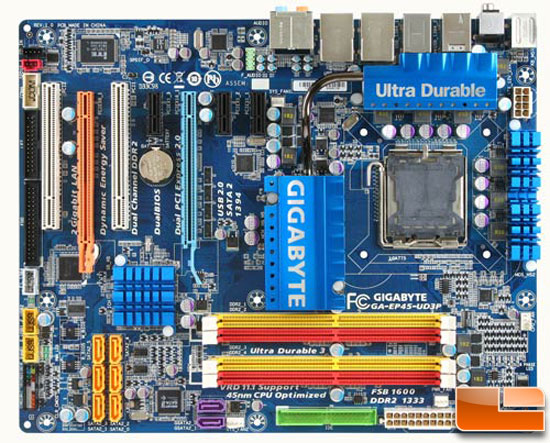

 FXstreet.com (Barcelona) - Sterling's reversal from 1.6120 high has ground support at 1.5935 low on Friday's Asian session, and the Pound is attempting to base on the mentioned level and return to higher levels.
FXstreet.com (Barcelona) - Sterling's reversal from 1.6120 high has ground support at 1.5935 low on Friday's Asian session, and the Pound is attempting to base on the mentioned level and return to higher levels. FXstreet.com (Barcelona) - Canadian unemployment rate has declined in September to 8.4% from 8.7% in August on the back of a 30,000 increase on net jobs, market analysts expected net jobs creation to reach about 5,000. The Canadian Dollar has soared.
FXstreet.com (Barcelona) - Canadian unemployment rate has declined in September to 8.4% from 8.7% in August on the back of a 30,000 increase on net jobs, market analysts expected net jobs creation to reach about 5,000. The Canadian Dollar has soared.




